Most frequent nursing actions in the intensive care unit
Intensive care units have been a small part of the components that make up a hospital, but this place is immersed in different medical specialties, nursing as well as other health professions to provide a thorough care of the patient to restore their health condition.
From the beginning of a working day until the end a series of activities are carried out, which according to the clinical condition of the patient may vary, but many of them have some similarity, even between intensive care units of other hospitals, These are called routine area, as in other disciplines or jobs.
As I mentioned before, these small hospital centers where patients in critical condition are treated, are full of complexities, for the assistance of all medical specialties and procedures with the sole purpose of restoring the critical condition of the patient, so that the workers of These units have the necessary training to act in due course that an eventuality arises.


One of the first and last activities carried out in intensive care units is the delivery and receipt of shift, therefore the nursing professional in charge of a patient prior to the delivery of the shift, must close the evolutionary notes indicating the time and conditions of the patient at the end of the shift, as well as the record of the balance of liquids ingested and disposed of, the registration of medications and changes presented during the shift, both the nursing staff and the doctor must capture your name and health record number in the medical record, as an element of protection and ethics when it comes to eventualities and legal situations.
The delivery and receipt of the shift is made patient by patient, verbally explaining the condition and clinical evolution of the critically ill person, it should mention the patient's name, age, reason for admission, updated medical diagnosis, status of Consciousness and emotional, oxygen that is received and because the medium is administered, the control of administered intravenous fluids, type of solutions or mixtures and quantity per hour, diuresis quantity and characteristics, if the patient is fasting or receiving any special diet, examinations pending, treatment tolerance.
It is important to mention in the deliveries and receipt of shift if the patient was performed or should undergo studies or special therapeutic measures, move to another hospital, preparation for exams if required, date and time if assigned appointment, if we We found in obstetric intensive care units to record if the newborn is alive and where he is, sex and under what conditions he is.
You should not miss the news that is presented in the work day such as income, disabled beds, damaged equipment, infrastructure alterations, unemployment cart status, check if the stocks of medicines and supplies are complete. If the equipment for diagnostic tests, X-rays, blood bank units work perfectly in the hospital, it should be checked if the defibrillator is in optimal condition.
For delivery and receipt of the puncture sites, there should be no signs of phlebitis and fully functional, if the patient has a probe to register use and drained fluid, similarly in the chest drains, the aspiration of secretions quantity and characteristics, the location of the orotracheal tube and operation of the mechanical ventilator, the professional who delivers the guard must report any change in the patient's clinical situation (vital signs, changes in the state of consciousness, among others of relevance).
We can say that any activity that is carried out within the intensive care unit is essential but the review of the unemployment car is one of the elements that is indispensable in the delivery and receipt of the shift since critical patients are handled and procedures are performed that They can affect the hemodynamic state of the sick person.
There is no single or established protocol of the elements that make up an unemployment car but each service will adapt it to your needs and patients served in that unit.
From the structural point of view, an unemployment car is formed by a main compartment in the highest part of the car where the multi-parameter monitor, secretion vacuum cleaner and defibrillator are located, in the lower drawers for emergency drugs, orotracheal tubes, laryngoscope, oxygen masks, manual insufflation pouch, venturi systems, tracheostomes, and useful medical surgical equipment; This car must have wheels for proper transportation to emergency situations.
That is to say that basically a car of unemployment for resuscitation maneuvers in the adult must have the following compartments:
1.Main or superior to locate the cardiopulmonary monitor, defibrillator and secretion aspirator.
2.Quick location emergency medications ordered according to the priority of use, there are units where they organize it by system for example:
a.- Cardiovascular drugs:
Adrenaline, dopamine, dobutamine, atropine, norepinephrine, ephedrine, nitroglycerin, isosorbitin, vasopressin.
b.- Beta and Antihypertensive blockers:
Esmolol, propanolol, atenolol, diltiazem, verapamil, clonidine, nifedipine, nitroprusside.
c.- Antiarrhythmic:
Amiodarone, lidocaine, digoxin, procainamide.
d.- Analgesics and Sedatives:
Thiopental sodium, diazepam, midazolam, propofol, diphenylhydantoinate, naloxone, nalbuphine, flumacenyl, morphine, fentanyl.
e.- Muscle relaxants:
Succinyl Hill, vecuronium bromide.
f.- Other Drugs:
Hydrocartisone, methylprednisolone, dexamethasone, furosemide, theophylline, aminophylline, ranitidine, sodium heparin, magnesium sulfate (MgSO4), potassium chloride (KCl), sodium bicarbonate (NaHCO3), physiological solution to dilute medications, among others.
3.Drawer where the materials to catheterize or permeabilize venous access such as jelcos, syringes of different caliber, adhesive, gauze, central venous catheter, scalpel blades, sutures, electrode envelope, conductive tube, scissors, flashlight, among others are located .
4.Airway compartment, where material for intubation and oxygen therapy will be located, such as:
Laryngoscopes with long and short, straight and curved blades # 1, 2, 3 and 4, orotracheal tubes # 6, 6.5, 7, 7.5, 8, 8.5, 9, 9.5, 10, laryngeal masks # 1, 2, 3 and 4 , May cannulae, guides or fixers, maguill clamp, aspiration probes, spray lidocaine.
5.And a place where parenteral infusions and plasma expanders are found, for example:
Crystalline Solutions: 0.9 physiological solution, ringer lactate, 5% and 10% dextrtose, 18% mannitol, 0.45 and 30% glycophysiological solutions, solution, bicarbonate, microglass, macro-rubber.
It is important that the car has wheels so that it can be easily moved and that there is nothing that obstructs it on the road, it must be located in an accessible place and that all personnel have knowledge of its location and content, electronic equipment (Monitor, defibrillator ) must remain plugged in, and all material inside it must always be easily visible and tidy.
It is the responsibility of the nurse that this car is complete and ordered for emergency use.

The aspiration of bronchial secretions through the orotracheal tube is a nursing procedure that is frequently performed in critical patients, so it is considered routine, this is done with the purpose of eliminating and extracting secretions that are inside the lumen of the tube that prevents the passage of air into the airway, guaranteeing a good air column and that the patient can breathe through the mechanical ventilator or without it properly.
To perform this procedure, 2 nurses or doctors are required, one of them will manipulate the manual insufflation bag (Ambú), present the probe to aspirate his partner and fluidize the secretions with 0.9% physiological solution and the other previous the placement of sterile gloves with open technique to manipulate the probe when aspirating.
This routine activity requires certain materials for its realization such as the vacuum aspirator with its proper container, to extract the secretions, sterile aspiration probes, aspiration tube that connects the sterile probe and the vacuum aspirator, sterile gloves, ambu with reservoir connected to oxygen source, Mayo cannula in case the patient is not completely sedated and bites the orotracheal tube, 10 ml injector to instill the 0.9% physiological solution through the orotracheal tube, distilled water bottle for washing the aspiration probe during and after the procedure, hat, mouth cap, sterile gown and eye protection lenses, sedatives if necessary prior medical indication.
This invasive technique to the airway can facilitate the entry of microorganisms and cause injuries to the walls of the trachea, therefore no unnecessary aspirations should be performed, so it is recommended to perform respiratory assessment to see visible secretions in the orotracheal tube, auscultate in search of respiratory noises that indicate the presence of secretions, appreciate sudden dyspnea, increase in peak and plateau pressures in the monitoring of mechanical fan curves, minute volume drop, decrease in oxygen saturation, to decide to perform said procedure.
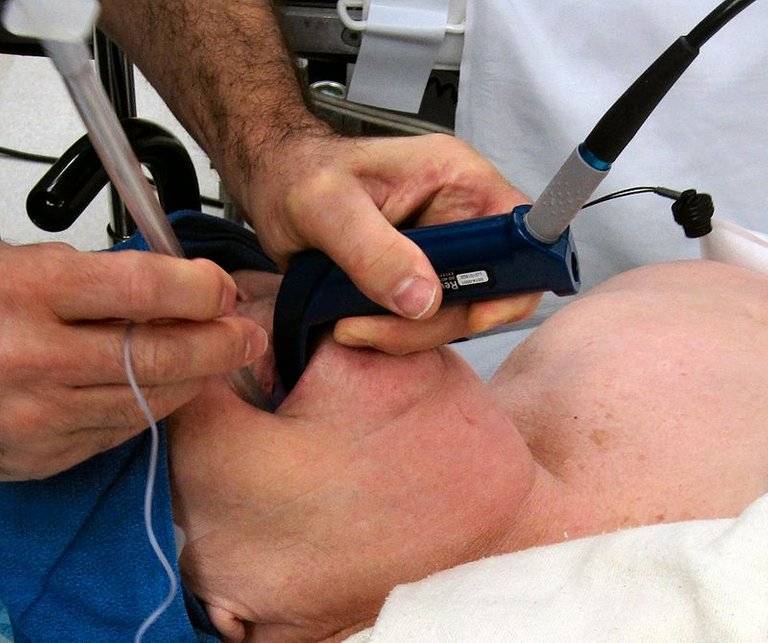
Public Domain Image

Patients in intensive care units because of their critical condition or dependence on an apparatus for their survival cannot leave their bed to bathe without taking a risk, but this is not a reason for not performing hygiene to this type of patients, it is because This means that the nursing staff of these units have the training to do the bath in bed without affecting the hemodynamic state and clinical condition of the patient.
This bath in bed is carried out with the purpose of avoiding the accumulation of batteries and microorganisms in the skin and others that can proliferate more easily due to the immunosuppression condition that can be found in the patient, therefore the daily baths in the bed in the Intensive care units is another routine activity that help maintain healthy skin, control odor and increase comfort.
This activity is usually done after the person has received an analgesic, that is, sedated and relaxed in this way the pain will be avoided, now if the patient is consciously motivate the patient to collaborate as much as he can with his bath.
The moment when the patient's hygiene is performed is a good time to inspect the skin for redness and injury.
To make the bath in bed you need the following materials a hot water jofaina and another with cold water, soap, two small cloths or sponges to rinse, a dry towel, moisturizing lotion to use after the bath, shavers if you want to shave the patient, shampoo and comb for hair care.
While performing the personal hygiene of the critical patient, their vital signs should be monitored at all times, having the elements that they will need next to the patient's bed, explaining the procedure to the patient so this sedated, uncover only the area of the body that You will wash to take care of the patient's modesty, place the patient in a 45 degree fowler position if the pathology allows it and start washing the head and move towards the feet, then turn the patient to the side and wash the back.
To wash the patient's skin, first moisten it and then gently apply a small amount of soap, then with a damp cloth, remove the soap, be careful that what is used by washing the genital area should not be used on the rest of the body , dry the patient well with a towel, perform wound cures and change the adhesive of the orotracheal tube, nasogastric tube and any other invasive method you have, apply the moisturizer on the skin, dress or wrap.

In any intensive care unit, one of the first care that is done to patients by the medical or nursing team is the measurement of vital signs, currently thanks to medical engineering there are multiparameter monitors that allow evaluating these values in real time.
We can say then that a technological perspective is currently given to care, which leads to continuous preparation to operate these electronic equipment easily and correctly, which strengthens the improvement of nursing care.
The cardiac or multiparameter monitor is a device used to measure the vital signs of a patient, which allows us to know the patient's clinical condition from the hemodynamic point of view, this device measures, displays and stores all the patient's vital signs , all on the same screen, such as respiratory rate (FR), heart rate (HR), temperature (T), blood pressure (BP), central venous pressure (PVC), electrocardiogram (EKG), oxygen saturation (SATO2) ), among others.
Each parameter appears on the screen of this monitor, which detects movement, pulsations and electrical activity through sensors that conduct the information via connecting cables to the computer where the numerical or graphic value of it is expressed.
Therefore, the intensive care nurse must ensure that the electrodes and sensors of the multiparameter monitor must be positioned correctly to avoid false values that alert the patient's clinical condition.
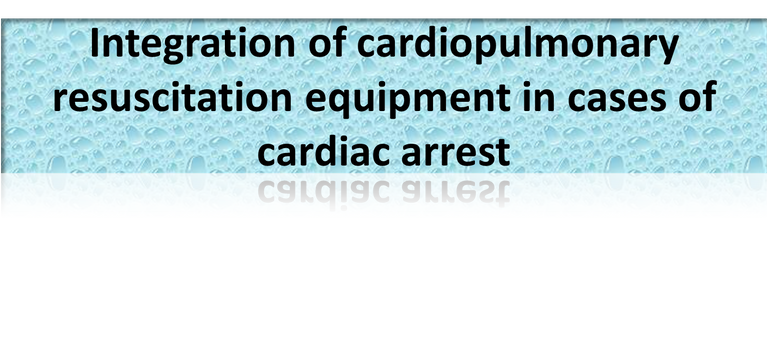
We all know that cardiorespiratory arrest is usually frequent in intensive care units and is the condition that puts a person's life at risk, therefore it needs immediate and effective action.
Cardiopulmonary resuscitation (CPR) is based on a set of procedures with the purpose of safeguarding the vital organs, reactivating the mechanical activity of the heart and thus preventing a lethal event, this resuscitation maneuver has a direct relationship between the start time of cardiopulmonary resuscitation and preservation of the integrity of the organs, so that the faster the circulation and oxygenation is restored in a patient with cardiorespiratory arrest, the total recovery is better.
Therefore, an immediate action plan must be taken to resolve the cardiorespiratory arrest, requiring the participation of the entire guard team (doctor, nurse) to act quickly, taking into account the objective of each person so as not to waste any time.
A cardiopulmonary resuscitation requires a minimum of 4 people and a maximum of 8, the function of each being as follows:
The Leader: Will be the person who directs the maneuver of action to cardiorespiratory arrest, it is important that this is the best trained in CPR.
Second person: It will have as an exclusive function the support of the airway, providing ventilation and oxygenation.
A third and fourth person: It will be responsible for performing chest compressions, this may have another person to serve as a substitute for being tired of giving cardiac massages.
The fifth professional: will take care of venous access and administer emergency medications.
A sixth professional: it will take resuscitation time, medications administered and maneuvers performed.
A seventh and eighth professional: they will support any member of the team that requests it and will also be in charge of looking for some other material that is required for resuscitation and that is not in the stop car as a tube and chest drains.
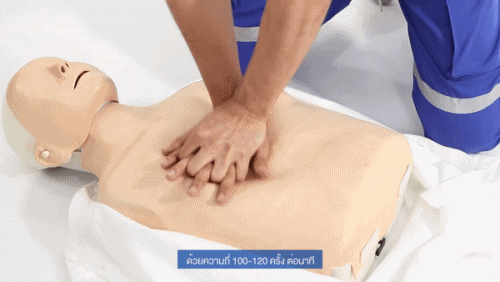
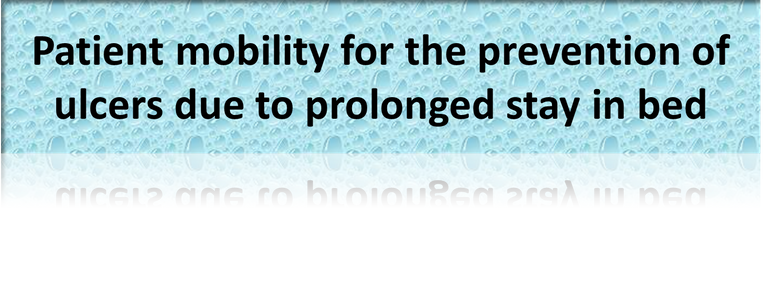
In intensive care units, many patients remain hospitalized for a long time according to the pathologies that make it impossible for them to move their limbs normally, representing a great challenge for the nurse of these units, in preparing an action plan that I managed to prevent unwanted complications due to prolonged stay in bed.
As I have mentioned in other publications, there are many factors that facilitate the appearance of pressure ulcers, in this type of patients, and blood supply at the level of body tissues is essential in the prevention of these injuries, patients who are they keep in bed for prolonged periods the venous return decreases, and in the areas where the bony prominences press with the bed the blood supply is affected until it becomes null which leads to its necrosis.
Within the care plan carried out by the intensive care nurse, it must be established that the patient is rotated from time to time to counteract the appearance of these lesions, as well as ensuring that the laying of the bed is carried out correctly and not have wrinkles that can further injure the skin of the person in the critical care unit.
It is essential that postural changes in the prevention of pressure ulcers must be accompanied by good skin hydration with creams or lotions, and of course their nutritional status must be adequate to their caloric demands.
The care plan must contemplate the reduction of humidity in the area that makes contact between the patient's skin and the bed, since it facilitates the appearance of pressure ulcers due to the proliferation of bacteria and fungi.
Within routine clinical activities in intensive care units, standardization of care for these patients who remain in bed for a long time, should incorporate actions that favor the reduction or appearance of pressure ulcers, so that the position changes of the Patient in bed are the most effective intervention in the prevention of these injuries.
Each postural change that is made in bed to a patient has an end, among which we have ventral or prone recumbency, dorsal or supine decubitus, right lateral decubitus, left lateral decubitus., Fowler position in different grades 30, 45, or 90 , trendelenburg, reverse trendelenburg, genupectoral position, sims position, rose or proetz position, gynecological or lithotomy position, but it is important to make clear that in this routine action it is performed with the purpose of minimizing the appearance of ulcers by Pressure.

The administration of medications is the nursing action that is most routinely performed not only in critical care units but also in any other clinical unit, and this action is not only to prepare a drug and administer it, it is to anticipate the risks inherent in the action of the chemical agent once introduced into the human body.
In the medical history the intensivist doctor according to the condition in which the patient is, prescribes the necessary drugs and it is from that moment where the nurse with this medical order begins with the preparation and updating of the medication administration sheet .
It is not about administering a medication for complying with this order, but rather a schedule must be established that is in accordance with the active principles of the medications, to avoid pharmacological interactions and adverse reactions that may affect the patient's condition.
Each medication comes in a different pharmacological presentation (tablets, capsules, coated pills, ampoules, syrups, suspensions, patches, suppositories, suppositories, among others) and each of them is administered by a different route of administration, and in critically ill patients Many medications are usually administered simultaneously, so it is important to know clearly this action of preparing and administering medications, to avoid adverse and unfavorable actions for the patient.
The mixture of more than two medications favors that a drug interaction may occur, some may be beneficial due to the synergistic action, enhancing the desired pharmacological effect of another medication, but this mixture may also be harmful to the patient, the medical and nursing staff These units must be routinely updated and know the interactions that may occur, implementing measures to prevent adverse effects, detect them in time and act effectively when it occurs.
The recording of each of the ventilatory parameters as well as the hemodynamic state of the patient is of paramount importance for the arrest of complications in time.
The information provided by cardiopulmonary monitoring is done for two purposes, first to help detect the nature of a problem that affects a patient, and second to identify the causes of complications and establish the response to them.
The critical patient requires a staff that routinely performs an interpretation of the parameters to be monitored and associates them with a clinical reasoning of the patient's condition, for the collection of this information a physical examination is needed daily.
The hemodynamic monitoring as well as its due registration allows us to obtain information on the cardiovascular and pulmonary status of the critical patient, in turn this essential tool helps us in the diagnostic approach and therapeutic management of the patient.
Therefore, there are already established formats in each intensive care unit where all this information of cardiopulmonary parameters is recorded, where in each hour or minute according to the critical condition that the patient is in, the information obtained from the sick person will be recorded In these formats, information such as body temperature, heart rate, blood pressure, mean blood pressure, exhaled CO2, oxygen saturation, respiratory rate, ventilatory parameters such as ventilatory mode, tidal volume, peak pressure, plateau pressure, Fio2, frequency are collected. established respiratory, exhalation inspiration ratio, minute volume, positive pressure at the end of expiration, flow.
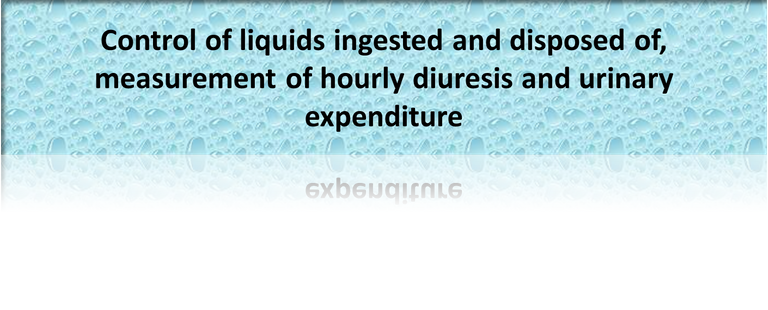
Within the routine care that is performed daily in the critical care units, we have the control of ingested and eliminated fluids which is done to all patients and with greater attention those with kidney conditions.
The human body internally is composed of 60% of its weight in liquids and this in turn is at the intracellular level (Intracellular Liquid (LIC) 40%) and extracellular (Extracellular Liquid (LEC) 20%), the latter being subdivided in 5% Intravascular Liquid (LIV) and the other 15% Intertisial or Tissue Liquid (LIT), all this from the physiological point of view.
This internal distribution of liquids must be kept in balance so that there is homeostasis. That is why the nursing professional or doctor with knowledge of body fluids allows you to specify the volume and quantity in fluids, through calculations to make replacements with the diet or intravenous fluids, thus counteracting hydroelectrolytic imbalances, existing basic acids in turn facilitates controlling the effect of treatments and drugs supplied to avoid over hydration and cause damage to the patient.
An intensive care nurse should not comply with treatment just because it is a medical order, without first assessing the patient and being able to detect kidney conditions so that we can restrict and control the fluids to be supplied in the patient to avoid complications.
A control of ingested and eliminated liquids, is a technique performed to obtain an exact measurement of the fluids that enter and are removed from the patient by different routes (oral, intravenous, urine, vomiting, among others), for the realization of it to consider the weight of the patient, the liquids administered and eliminated properly quantified in a certain time, subtract the liquids eliminated through drains, and those that are used in the washing of probes or tubes, quantify the weight of the dressings, gauze, diapers, bed centers among others, for an exact control of the liquid removed, and of course add the liquids that are supplied orally.
To carry out a control of ingested and eliminated liquids, there is a format in the patient's medical history that we must fill in correctly, we will also need bottles, injectors among others to measure fluids such as drugs, hydrations, urine, use of gloves, mask, sterile clothing and a controlled septic environment where everything excreted by the patient is eliminated.
It is important to be clear about the Ingested liquids and among these we will find the oral route that are those that the patient has ingested during a certain time, measured by cc, the enteral route that represents those liquids given by Nasogastric tube, by mouth and the parenteral route those that are administered directly to the venous system.
Within the eliminated liquids, we can find those that are expelled by the oral route such as vomiting (biliary, food, hemoptysis, hematemesis), urinary tract as the amount of urine in average in cc, rectally or anally as feces when they are mainly diarrheal, liquids removed by probes (nasogastric, orogastric), ostomies, ilestomies, jejunostomies, colostomies, cystotomies and drains are also considered liquids.
Before starting with the water balance we take out the metabolic water and the insensitive losses, being the metabolic water that originates from the metabolism of carbohydrates, fats among others, this is also the product of oxidation (water produced by cellular respiration), in An adult is approximately 300 cc of metabolic water for 24 hours. Now when we refer to insensitive losses, it is the amount of liquid that cannot be easily regulated easily, but studies estimate it approximately between 700 and 1000 ml per day.
According to the pathology and clinical condition of the patient can increase or decrease the elimination of fluid that we call insensitive losses, so to have a more specific value a formula k / kg / hours of the balance will be used, where according to the special situations if they were present in the patient's clinic the constant k will have a variation of 0.5 ml in patients who do not have a special situation of therapeutic assistance, 1 ml in intubated patients, with tachypnea, fever and excessive diaphoresis and 1.5 ml for when The person has more than 30% of their burned body surface and has excessive drainage.
For the calculation of the hourly urine output and urinary expenditure, we are going to rely on the data obtained and duly recorded in the water balance, where the hourly urine output is obtained by dividing the amount of urine between the hours in which it was eliminated.
As demonstrated in the following formula DH = Urines / Hours
Now the urinary expenditure is the result of the Hourly Diuresis (DH) between the patient's weight.
As demonstrated in the following formula GU = DH / Weight
We will then go through the following example to demonstrate how we obtain the hourly urine output and the urinary expenditure we will consider that a patient eliminated through the urine 900 cc in 6 hours, then we enter the data in the formula leaving the DH = 900 cc / 6 hours when performing the mathematical calculations this results in DH = 150 cc per Hour, and with this data we proceed to calculate the urinary expenditure so we apply the data in the formula GU = 150 cc per hour / 70 Kg obtaining as a result GU = 2.14 cc / kg / Hour.
He wrote for you the Lcdo. Félix Arnaldo Rodríguez Díaz @Felixrodriguez
References Cited
Nursing care critical patients
Intensive care: Patients' experiences
Cardio pulmonary resuscitation intensive therapy
Fluid control intensive therapy
Pressure ulcer prevention intensive therapy
To listen to the audio version of this article click on the play image.

Brought to you by @tts. If you find it useful please consider upvoting this reply.
This post has been voted on by the SteemSTEM curation team and voting trail. It is elligible for support from @curie and @minnowbooster.
If you appreciate the work we are doing, then consider supporting our witness @stem.witness. Additional witness support to the curie witness would be appreciated as well.
For additional information please join us on the SteemSTEM discord and to get to know the rest of the community!
Thanks for having used the steemstem.io app and included @steemstem in the list of beneficiaries of this post. This granted you a stronger support from SteemSTEM.
Your post has been curated by the bitcoin myk project. Tokens are available for this account you can trade for steem at: https://steem-engine.com/. Join our curation priority list to earn more tokens by registering at:
http://www.bitcoinmyk.com/register/
Bitcoin MYK
admin
Register - Bitcoin MYK
According to the Bible, What does the Bible say about changing religions? (Part 2 of 2)
Comment what you understand of our Youtube Video to receive our full votes. We have 30,000 #SteemPower. It's our little way to Thank you, our beloved friend.
Check our Discord Chat
Join our Official Community: https://beta.steemit.com/trending/hive-182074